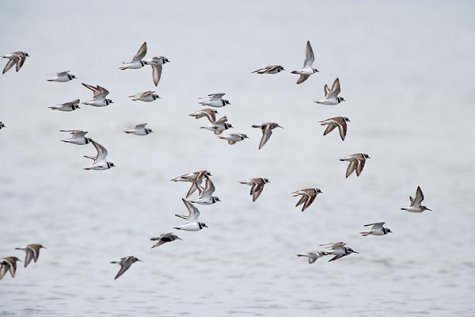Ringed plover migration on the coast
Photos: Arne Ader
Translation: Liis
Ringed plovers
Ringed plover Liivatüll Charadrius hiaticula
Our birds of the year, the ringed plovers, are leaving: when the first half of September ends they are usually gone from here.
During migration and at feeding stops the ringed plovers are interesting to watch. These are mostly inhabitants from the northern regions who often travel in mixed flocks with other waders. The juveniles that were hatched and fledged during the summer in Estonia have already left. The migrant flocks stop at foraging areas, on open beaches, the islands and islets where hiding is impossible; they search for aquatic molluscs and invertebrates in the beach mud, pebbles and seaweed banks; there is enough for all. The risk for each individual bird to fall victim to a predator or bird of prey is smaller in the group: hundreds of pairs of eyes at least are observant ...
In a wader group the ringed plovers are easy to recognize, they are among the smallest, a little larger and sturdier than skylarks. Back plumage and head are sand-coloured, on the forehead and the neck a black band, white in between. The legs are orange as is the beak that has a black tip and above the beak, between the eyes, is a white patch. If you try to distinguish between juveniles and adults on the autumn migration, pay attention to the white eyebrow streak which is shorter for adult birds.
For winter they fly to both Western Europe and Africa.
(Estonian original 02.09.2012)









